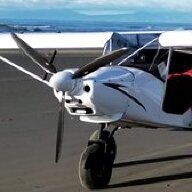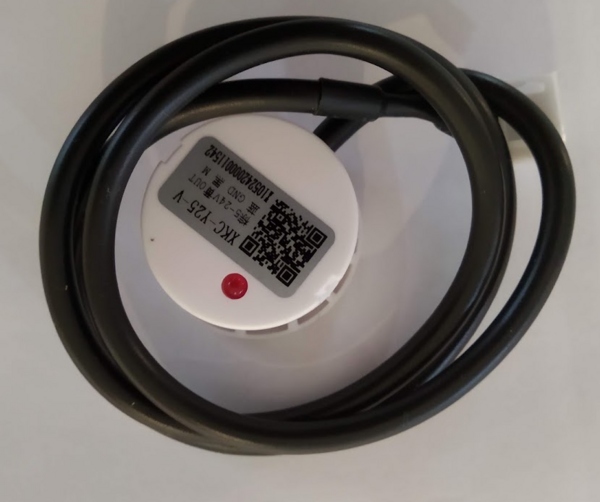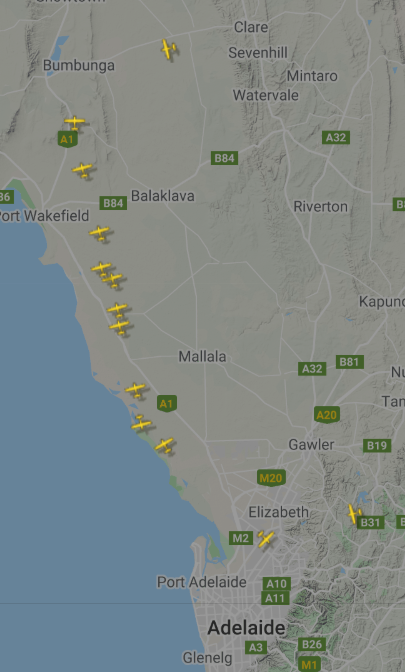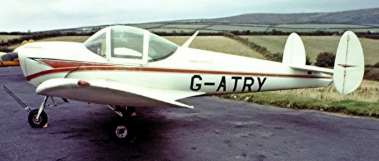-
Posts
30 -
Joined
-
Last visited
Content Type
Profiles
Forums
Gallery
Downloads
Blogs
Events
Store
Aircraft
Resources
Tutorials
Articles
Classifieds
Movies
Books
Community Map
Quizzes
Posts posted by AndyDrain
-
-
I count 1000, 2000 and have half flap so that makes full flap about 4 seconds. I have never measured it but will next flight.
I went for electric flaps when I built - I was originally going to have twin sticks. Then I decided against those but thought I would stick with the electric flaps as it removed the lever between the legs.
My flap switch is immediately above the left hand throttle. I can activate without actually taking my hand off the throttle.
People said stay with manual so you can dump the flaps immediately you land. I'm not into that extreme flying as the landing distance is very short without letting go of the throttle, reaching between my legs and dumping the flap. If I was going to do anything to shorten the distance I would replace the wheels/brakes with something better.
Flap motor failure could occur but a flap-less landing is a non event. Unless you operate in the extreme all the time.
On the plus side you can select any flap setting you want.
Asymmetric flap operation. - No difference to chance with electric or manual. They both use the same mechanism.
The ICP electric flap kit is expensive. It is very basic and you could build your own for a fraction of the price.
There are documented cases of uncommanded manual flap operation.
Still happy with my choice after 800 hours 🙂
-
 1
1
-
-
I actually have them on all four - just because I can. I find the Rislan levels hard to see when they get low so an extra clue is good. I plan to add one to the header tank "one day".
They naturally flash as the fuel sloshes around.
-
Recently I have been getting bits to NZ from Aliexpress in 2 weeks. Of course there are the odd bits that take 2 months or never arrive.
-
 1
1
-
 1
1
-
-
I have been working with these sensors for some time but always through a small Arduino driven multi function display.
I realised that a very cheap 12 v system could be used.
The sensors are placed around the 5 litre level and are set to display a green LED all the time fuel is present. That way if the system fails the LED goes off. If the Black wire, on the sensor, is connected to Positive the light will be ON if there is low fuel. (A Red LED could then be used).
If the Sensor cover is removed a small trimming screw is available that needs to be adjusted to allow for tank wall thickness. I have a 3d printer file available for a plastic holder that can be stuck to the tank and the sensor slid in.
The sensor is available from many places. As example here.
The LED was from Jaycar. They also have larger ones if this is too small.
Total cost under NZ$20 per tank.
As it is 12 v the frame can be used for Earth so only minimal wiring is required. As well as the wing tanks one could be added to the header as back up to the current system.
-
 1
1
-
 1
1
-
-
I see the image I pasted earlier on the sensor didn't appear so I will try again.

-
 2
2
-
-
@lyle janke
Looks like the same sensor- there is probably only one company producing these. They come in range of different versions. I have to say it looks a bit expensive at US$129.95.
The actual sensor is of the order of US$5-10.
-
 1
1
-
-
These might be better as they incorporate a relay so you could simply add lights next to the existing warning light using the relay contacts. They were not around when I started.
-
 1
1
-
-
These.. Currently integrating them into a combined display of Carb Icing prediction and flap display. (I have electric flaps).
I use an Ardunio NANO. The sensors are a little sensitive to set up as you need to adjust a small screw to allow for the thickness of the tank. They are capacitance based so your hand can get in the way of things.
-
 1
1
-
-
Some POH for the VG refer to 20 and 40 degrees for flaps. This was a VG.
The official UK AAIB report is unlikely to get this wrong. 🙂
-
Does waffle/wallow with full flap. I find I can be very precise, without too much effort, provided I don't use full flap.
I have found the electric flaps great. Originally went for them to remove the bit between the legs.
Dan
I assume that you have seen this Savannah Accident. Flap lever to blame.... I have heard of other cases of the flap lever retracting on final.
Many in New Zealand have the extended rudder (from the tail wheel.) fitted.
I have flown mine without and with but probably don't have enough skill to notice much difference. Although in crosswinds the weathercock tendency needs to be watched.
-
Just tried a couple of full flap 40kt approaches to check - I only need slight back pressure, quite comfortable to fly.
I have, but have not fitted, a set of vanes to go on the elevator. I wonder what effect these would have.
-
 1
1
-
-
Hi Dan
Interested in your never using full flaps story. I have electric flaps and only use the full setting for shortest strips. Most of the time I use a setting just short of full.
-
Cruise Bar 2
Full flap approach Top Bar, slight back pressure.
Adjustable seats not fitted.
-
 1
1
-
-
Ibob - I do agree but have a worry that relying on a non fail safe warning on a small header tank is a little worrying. Hence I'm in the process of adding an additional fail safe sensor to this tank.
-
 1
1
-
-
Hi. I also play a bit with Arduinos. These sensors can detect fuel through the tank walls. I have put them about an inch up from the bottom of each tank and connected them through an Arduino to a simple 4 LED display. Set to be on when fuel is present - they start to flash as the fuel gets to slopping level and go out around 5 Litres. I plan to add one to the header tank one day as an extra safety measure. They are only a few bucks each.
-
 4
4
-
 1
1
-
-
Remember the test switch only checks the bulb is good - not the sensor. In 600 hours I have only had the warning light come on twice, when unplanned. On both occasions I picked up the warning while it was in the flashing state - prior to becoming steady. The light is in the default location. ( I would move it if I built another).
I'm currently mounting sensors on the outside tanks to give a 5 litre warning. They will not be very accurate but will at least tell me when those tanks are empty. I can set those up so that a light goes off when the level is low, so it is reasonably fail safe.
-
 1
1
-
-
Luca
On page 15/34 where components SA160-1 are located there should be a large hole for the outer tank. The illustration has one but for the two tank version there should be two.
So there is actually nowhere to place these. My recollections are fading but I think the other angulars go as per instruction.
-
-
-
After a few months I covered mine in carpet. A definite improvement.
-
During the build I put in electric flaps but kept the center stick. The switch is up near the throttle and I am very happy with it after 270 hours. Leaves the space between the legs free.
Can have any flap position you want. Was a bit expensive but it could be done quite cheaply as is very simple.
-
Thanks..
-
Thanks Kyle - That would mean each tank would have around 15 litres of unusable fuel. ( 4 x 15 = 60) Descent with less than 15 litres would require frequent leveling off. Based on the trials I have conducted I don't believe that is the case. I became reasonably familiar with the fuel system during the build and have not experienced the fuel light coming on, when not expected, at other times. It is actually quite a useful way of ensuring I use most of the fuel in a tank.
I was just wondering how the reduction in pressure a bit higher up might cause the issue..
Thanks again.
-
Appreciate this is an old thread but....
Was flying over the mountains at 7500 ft when the fuel warning light came on...
I have four individual tank feeds and was running on the right inner with about 15 liters remaining. I had been level for about 3 minutes. Power around 5200 for the last 15 minutes.
Vent pipe goes from top of 6 liter header to left inner tank. Tank vents are hockey sticks in caps with thick non original cap seals. Vents regularly blown through.
Selected left inner along with the right and fuel light went out.
I regularly run on right inner only without issue. With left and right inners selected left tends to drain first.
Have since test run 15 minutes at 5200 at 2000 feet without issue so must assume altitude had something to do with it.
Left inner had 25 liters so the vent pipe was well above the fuel level. All tank feeds checked as part of build all gave adequate flow.
My physics is not up to an explanation....
Savannah S, 15 months 230 hours..









Correct hose clamping and firesheathing
in Savannah
Posted
Hi Bill
Interested in your progress as it is a task I am currently planning for on an S.
I source quite a few things from RS (https://nz.rs-online.com/web/c/fasteners-fixings/clips-springs/hose-clips-jubilee-clips/?applied-dimensions=4291630177)
This is an NZ link but the company is global. I have always found them good. Although these days they charge postage. ( I used to be able to order couple of components which they would ship from the UK for free.)
Are you planning their crimp type clamps ?
Do you have the ICP corrugated pipes ? These just have a short section of rubber at each end. In the case of my oil lines this appears to be hydraulic hose.
Andy